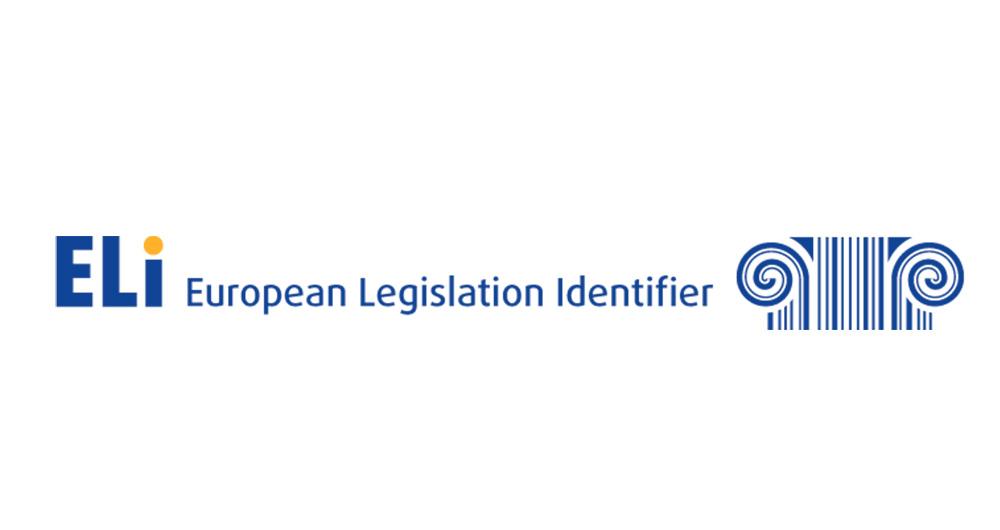
Nowadays we can find a great deal of legislative information on the web. Countries, regions and municipalities make their regulatory and legal texts public through various spaces and official bulletins. The use of this information can be of great use in driving improvements in the sector: from facilitating the location of legal information to the development of chatbots capable of resolving citizens' legal queries.
However, locating, accessing and reusing these documents is often complex, due to differences in legal systems, languages and the different technical systems used to store and manage the data.
To address this challenge, the European Union has a standard for identifying and describing legislation called the European Legislation Identifier (ELI).
What is the European Legislation Identifier?
The ELI emerged in 2012 through Council Conclusions (2012/C 325/02) in which the European Union invited Member States to adopt a standard for the identification and description of legal documents. This initiative has been further developed and enriched by new conclusions published in 2017 (2017/C 441/05) and 2019 (2019/C 360/01).
The ELI, which is based on a voluntary agreement between EU countries, aims to facilitate access, sharing and interconnection of legal information published in national, European and global systems. This facilitates their availability as open datasets, fostering their re-use.
Specifically, the ELI allows:
- Identify legislative documents, such as regulations or legal resources, uniquely by means of a unique identifier (URI), understandable by both humans and machines.
- Define the characteristics of each document through automatically processable metadata. To this end, it uses vocabularies defined by means of ontologies agreed and recommended for each field.
Thanks to this, a series of advantages are achieved:
- It provides higher quality and reliability.
- It increases efficiency in information flows, reducing time and saving costs.
- It optimises and speeds up access to legislation from different legal systems by providing information in a uniform manner.
- It improves the interoperability of legal systems, facilitating cooperation between countries.
- Facilitates the re-use of legal data as a basis for new value-added services and products that improve the efficiency of the sector.
- It boosts transparency and accountability of Member States.
Implementation of the ELI in Spain
The ELI is a flexible system that must be adapted to the peculiarities of each territory. In the case of the Spanish legal system, there are various legal and technical aspects that condition its implementation.
One of the main conditioning factors is the plurality of issuers, with regulations at national, regional and local level, each of which has its own means of official publication. In addition, each body publishes documents in the formats it considers appropriate (pdf, html, xml, etc.) and with different metadata. To this must be added linguistic plurality, whereby each bulletin is published in the official languages concerned.
It was therefore agreed that the implementation of the ELI would be carried out in a coordinated manner by all administrations, within the framework of the Sectoral Commission for e-Government (CSAE), in two phases:
- Due to the complexity of local regulations, in the first phase, it was decided to address only the technical specification applicable to the State and the Autonomous Communities, by agreement of the CSAE of 13 March 2018.
- In February 2022, a new version was drafted to include local regulations in its application.
With this new specification, the common guidelines for the implementation of the ELI in the Spanish context are established, but respecting the particularities of each body. In other words, it only includes the minimum elements necessary to guarantee the interoperability of the legal information published at all levels of administration, but each body is still allowed to maintain its own official journals, databases, internal processes, etc.
With regard to the temporal scope, bodies have to apply these specifications in the following way:
- State regulations: apply to those published from 29/12/1978, as well as those published before if they have a consolidated version.
- Autonomous Community legislation: applies to legislation published on or after 29/12/1978.
- Local regulations: each entity may apply its own criteria.
How to implement the ELI?
The website https://www.elidata.es/ offers technical resources for the application of the identifier. It explains the contextual model and provides different templates to facilitate its implementation:
It also offers the list of common minimum metadata, among other resources.
In addition, to facilitate national coordination and the sharing of experiences, information on the implementation carried out by the different administrations can also be found on the website.
The ELI is already applied, for example, in the Official State Gazette (BOE). From its website it is possible to access all the regulations in the BOE identified with ELI, distinguishing between state and autonomous community regulations. If we take as a reference a regulation such as Royal Decree-Law 24/2021, which transposed several European directives (including the one on open data and reuse of public sector information), we can see that it includes an ELI permalink.
In short, we are faced with a very useful common mechanism to facilitate the interoperability of legal information, which can promote its reuse not only at a national level, but also at a European level, favouring the creation of the European Union's area of freedom, security and justice.
Content prepared by the datos.gob.es team.